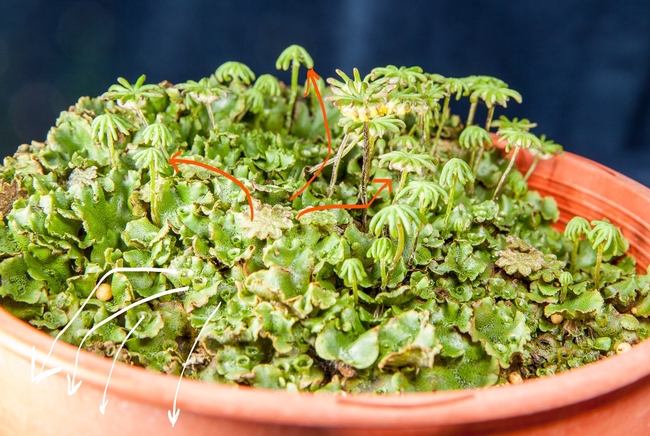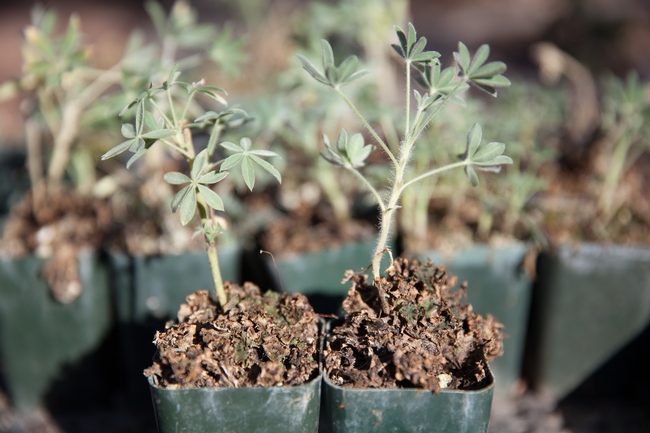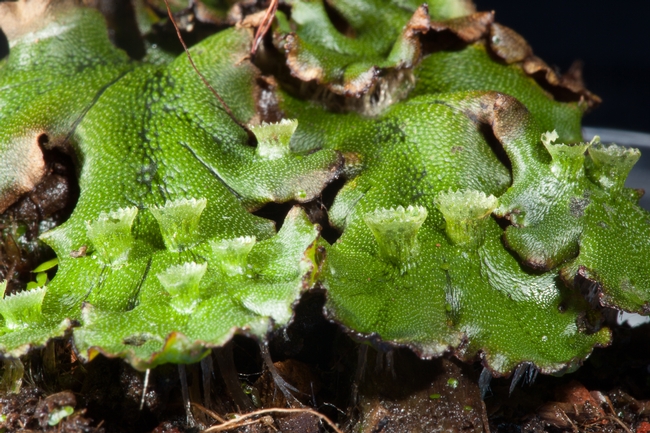In this last post on liverwort biology and management, we look at some key management strategies and why they can be effective.
Reduce overhead splashing water and flooding pots
Remember from previous posts that there are over 100 gemmae clones in each gemma cup ready to be splashed out and moved. If the gemmae find a suitable environment each one can establish a new individual. (The white arrows lead from the gemma cups and illustrate potential movement). Also remember, that the male reproductive structure produces sperm when exposed to water. Each sperm has a flagella and swim. Can you imagine what happens when irrigation water rates exceed the infiltration rate of the potting mix, and the pot is flooded? Sperm are produced and can move freely to the "waiting" female structure above. (The orange arrows lead from the male reproductive structure to the female structure and illustrate potential movement that can result in fertilization).
Irrigate on the dry side when you can
Remember that liverworts are very vulnerable to drying. They don't have root systems like most plants only root- hair- like structures that are sensitive to drying. If you have a crop that can tolerate drying like lupine, why not irrigate on the dry side to dry out the liverwort?
Left: Lupine irrigated on the dry side resulting in the drying and dying of liverwort.
Use contact herbicides if compatible
On the liverworts upper surface are thousands of open pores that are used to enhance air exchange. Here they are seen as whitish bumps, almost like thousands of orderly spaced pin pricks. (And the gemma cups are clearly visible).
A micrograph of a single pore is seen below.

Left: Here's a micrograph of a liverwort with a pore on the upper side. Liverworts cannot close these pores in dry conditions. They also lack a thick surface layer of wax on the upper cell layer.
The liverwort is vulnerable to contact herbicides such as various herbicidal soaps and botanical oils. The soaps and oils can penetrate the open pores and thin upper cell layer, resulting in cell water loss and death.


